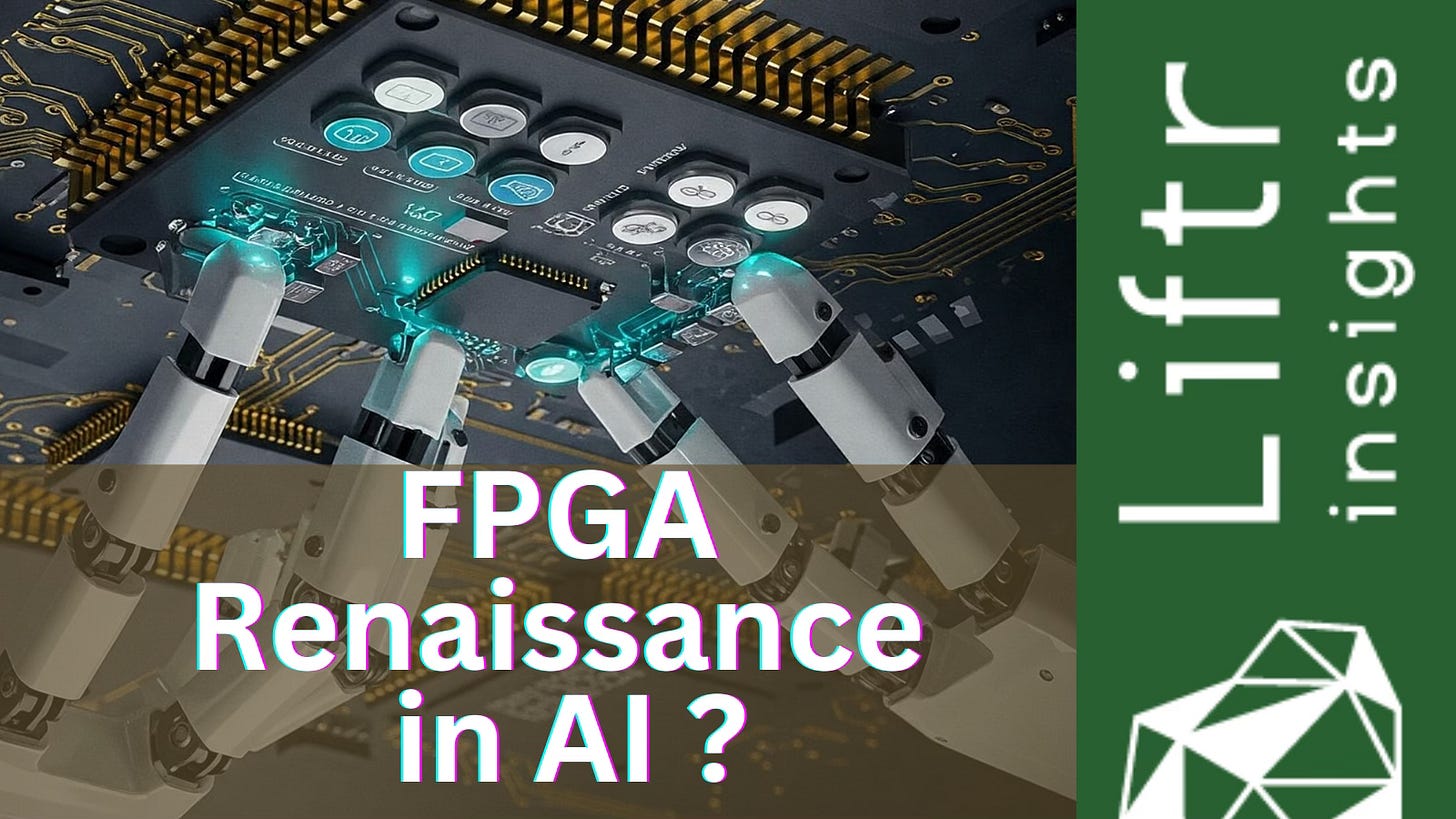🚀 Is Amazon Jump Starting an FPGA Renaissance in AI? 🎛️🤖⚡
Would you like to be featured in our newsletter🔥 and get noticed, QUICKLY 🚀? Simply reply to this email or send an email to editor@aibuzz.news, and we can take it from there.
Sort of. But, GPUs aren’t going anywhere
Liftr Insights observed that 37.5% (over 1/3) of AWS’s accelerated servers deployed in the first half of February 2025 were FPGA-based. This deployment supported its recently announced F2 instances. FPGAs are still a small portion (3.3% per Liftr Insights data as of the end of February 2025) of the accelerated computing fleet at AWS. However, the bold investment and launch merit a deeper look at FPGAs in AI and how they can help enterprises in their AI journey.
What is an FPGA?
FPGA stands for field programmable gate array. These chips are deployed in a server and can be repeatedly programmed to perform specific tasks after the manufacturing process. This enables enterprises to define highly specific instructions at the hardware level, providing a high degree of versatility and other benefits, such as high performance for specific workloads. This versatility comes with a price: FPGA-enabled hardware is more expensive and requires specific programming tools and skills. But in the right scenarios, the benefits easily outweigh this cost.
When should enterprises consider FPGA computing in AI?
Ability to customize and test: Because FPGAs are programmable, enterprises can design and deploy specific, higher-performance software workloads. Additionally, the FPGA can be changed over time to meet the solution's needs. This programmability is also very useful in a cloud environment, where a customer can scale up its usage over time and multiple customers can use the same pool of hardware. In the case of AWS F2 instances, Amazon also provides the tooling required to program the FPGAs.
Real-time AI: GPUs are great for batch-based AI operations where a high degree of parallel computing with high data variability is necessary. Training an LLM is a perfect example. However, there are some inference use cases, such as robotics or autonomous vehicles, where GPUs may not be the best choice. In many of those cases, the low latency provided by programming at the hardware level provided by FPGAs is ideal. Other use cases, such as genomics and cybersecurity, have also benefited from FPGAs.
What are the benefits of using FPGA acceleration vs GPUs?
FPGA instances cost $.13 per VCPU per hour vs. $.35 for an A100 GPU in the same US Region.
Lower cost: While FPGAs and GPUs do not necessarily compete, the relative difference in on-demand instance pricing is significant. That’s driven by both instance size and price per VCPU. FPGA instances can be purchased in smaller increments starting at 24 VCPUs versus a high-performance A100 GPU which starts at 96 VCPU on AWS. As tracked in Liftr Insights data, the pricing per VCPU is also lower for FPGA instances. FPGA instances cost $.13 per VCPU per hour vs. $.35 for an A100 GPU in the same US Region. So, in cases well-suited to FPGAs, FPGAs provide a much lower ongoing operating cost.
Lower energy use: The energy requirements of an FPGA-based server tend to be less than a GPU-based system. While there is no hard set of rules regarding the difference, some lab benchmarks have estimated the difference between 10% and 30%1 in terms of electricity consumption. For those with sustainability requirements, this may be a consideration particularly in FPGA-specific use cases.
Conclusion
In the right circumstances, FPGAs provide a great deal of benefit in delivering some AI use cases. And while GPUs will continue their dominant position for the foreseeable future, enterprises need to consider alternatives depending on the specific needs of the solution. This is where insights and analytics from Liftr Insights can provide a great advantage to analysts using market intelligence to make better data-based decisions for cloud and AI.
Speaking of AI, check out the series of articles about AI models. And, learn more about the growing influence of ARM in the cloud. Stay on top of the latest updates by signing up for the Liftr Newsletter.



